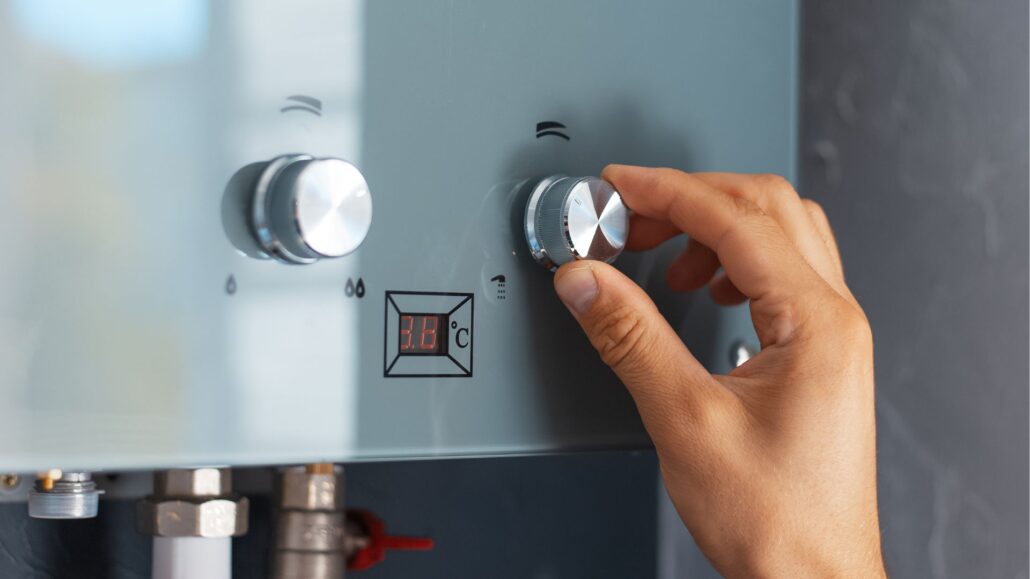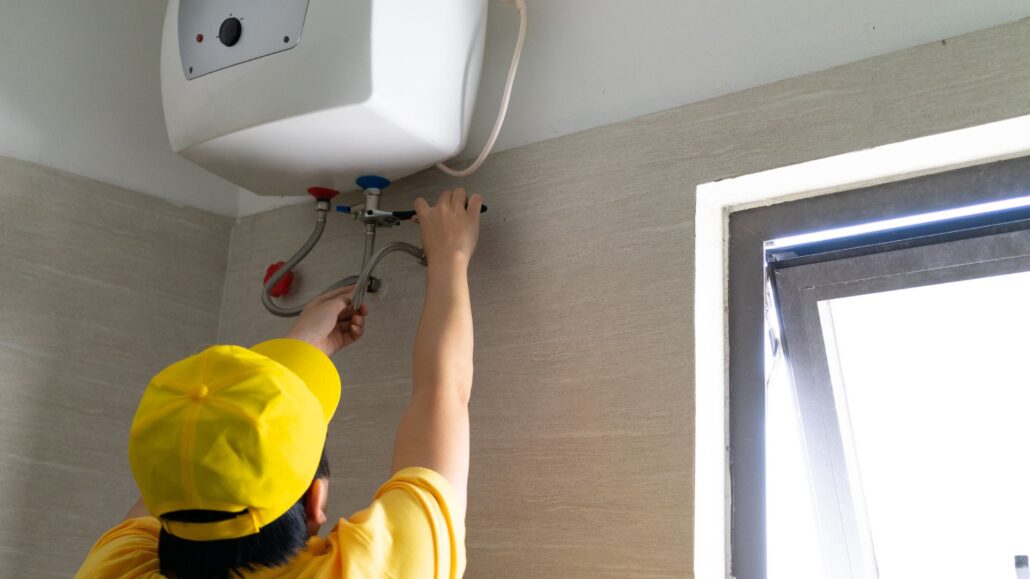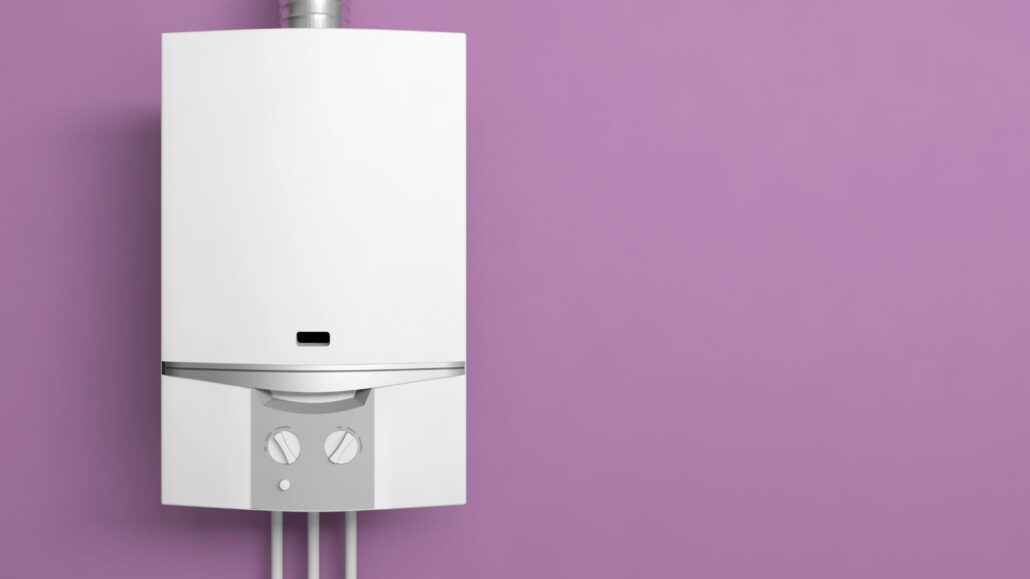Tankless water heaters have become increasingly popular in recent years due to their energy efficiency and ability to provide an endless hot water supply. These compact units heat water on demand, ensuring you never run out of hot water while saving your home’s space.
However, to ensure that your tankless water heater continues to operate at peak performance and enjoys a long lifespan, it is crucial to understand the importance of proper tankless water heater maintenance. Regular maintenance tasks, such as flushing the unit and cleaning the air filter, can help prevent common issues and keep your tankless water heater running smoothly for years to come.
Understanding Tankless Water Heaters

Tankless water heaters, also known as on-demand orinstantaneous water heaters, heat water as it flows through the unit rather than storing hot water in a tank. When a hot water tap is turned on, cold water travels through the tankless water heater’s heat exchanger, which is heated by either gas or electricity. The heat exchanger rapidly heats the water to the desired temperature, providing an endless hot water supply as long as there is a demand.
Compared to traditional tank-style water heaters, tankless water heaters offer several advantages. They are more energy-efficient since they only heat water when needed, reducing standby energy losses associated with keeping a large water tank hot. Tankless water heaters also take up less space, as they are wall-mounted and do not require a bulky storage tank. Additionally, they have a longer lifespan, typically lasting 20 years or more with proper maintenance, compared to 10-15 years for tank-style units.
However, tankless water heaters can face issues affecting their lifespan if not addressed through regular maintenance. Common problems include mineral build-up, which can reduce efficiency and cause damage to the heat exchanger, and a dirty air filter, which can lead to overheating and decreased performance. Regularly flushing the unit and cleaning the air filter can help prevent these issues and extend the life of your tankless water heater.
How to Maintain a Tankless Water Heater
Maintaining your tankless water heater ensures its longevity and efficient performance. Regular maintenance tasks include flushing the unit to remove mineral build-up, cleaning the air filter, and inspecting the system for leaks or damage. Flushing your tankless water heater involves turning off the power and water supply, connecting a hose to the cold water and hot water valves, and running a descaling solution through the unit to remove accumulated minerals.
It’s also crucial to regularly clean or replace the air filter to prevent debris from blocking airflow and causing the unit to overheat. Consistently performing these maintenance tasks can significantly extend the lifespan of your tankless water heater and help you avoid costly repairs or premature replacement.
Regular Maintenance Practices

Regular maintenance is crucial for extending the lifespan of your tankless water heater and ensuring its optimal performance. Two key maintenance tasks are flushing the unit to remove mineral build-up and cleaning the air filter.
Flushing the unit to remove mineral build-up
Over time, minerals such as calcium and magnesium can accumulate inside your tankless water heater, reducing efficiency and potentially causing damage. To prevent this, you must flush your tankless water heater regularly. The recommended frequency of flushing depends on the hardness of your water supply, but generally, it should be done at least once a year.
Step-by-step guide on how to flush a tankless water heater:
- Turn off the power supply to your tankless water heater.
- Close the cold water and hot water valves to isolate the unit.
- Connect a hose to the cold water and hot water valves, and place the other end in a drain or bucket.
- Open the purge port valve caps to allow water to flow through the hoses.
- Turn on the cold water valve to flush out debris or mineral build-up.
- Close the cold water valve and remove the hoses.
- Open the cold water and hot water valves to restore water flow to the unit.
- Turn the power supply back on.
Cleaning the air filter
The air filter in your tankless water heater helps prevent debris and dust from entering the unit, ensuring proper combustion and preventing overheating. A dirty air filter can reduce efficiency and potentially damage your tankless water heater.
Locating the air filter and assessing its condition:
- Consult your tankless water heater’s manual to locate the air filter, as its position may vary depending on the model.
- Remove the air filter and inspect it for any debris, dust, or damage.
Cleaning or replacing the air filter as needed:
- If the air filter is reusable, clean it with soap and water and allow it to dry completely before reinstalling it.
- If the air filter is disposable or heavily damaged, replace it with a new one.
- Reinstall the clean or new air filter, ensuring it is securely in place.
Inspecting the water filter
The water filter in your tankless water heater helps trap sediment and debris from the water supply, protecting the unit’s internal components.
Identifying the water filter and checking for debris:
- Locate the water filter, usually positioned near the cold water inlet.
- Remove the water filter and inspect it for any accumulated debris or sediment.
Cleaning or replacing the water filter when necessary:
- Clean the water filter thoroughly with water and a soft brush if it is reusable.
- If the water filter is disposable or damaged, replace it with a new one.
- Reinstall the clean or new water filter, ensuring it is properly seated and secured.
Proper Usage Techniques
Setting the correct temperature to prevent overworking the unit:
Adjusting your tankless water heater’s temperature to a reasonable level, typically around 120°F, can help prevent the unit from overworking and prolong its lifespan. Setting too high a temperature can increase mineral build-up and strain on the system.
Managing hot water demand to avoid strain on the tankless water heater:
Consider staggering high-demand activities like running the dishwasher washing machine and taking showers to reduce stress on your tankless water heater. This allows the unit to heat water efficiently without being overwhelmed by simultaneous demands. Installing low-flow fixtures, such as showerheads and faucets, can also help reduce hot water consumption and alleviate strain on the system.
Insulating hot water pipes to minimise heat loss and improve efficiency:
Insulating your hot water pipes can help maintain the desired water temperature as it travels from the tankless water heater to your fixtures. This reduces heat loss, improves energy efficiency, and decreases the workload on your tankless water heater.
Troubleshooting Common Issues

Identifying and addressing error codes:
When issues arise, tankless water heaters may display error codes. Understanding the meaning behind these codes is crucial for resolving problems effectively. Common error codes include those related to ignition failure, overheating, and water flow issues.
Consult your unit’s manual for a list of error codes and their corresponding solutions. It may involve cleaning specific components like the heating elements, resetting the system, or replacing faulty parts such as the recirculation pump or temperature sensors.
Dealing with mineral build-up and scale
Over time, mineral deposits can accumulate within your tankless water heater, reducing water flow, inconsistent temperatures, and decreased efficiency. Signs of mineral build-up include reduced water pressure, longer wait times for hot water from the hot water faucet, and unusual noises coming from the unit.
To remove stubborn mineral deposits, use a commercial descaling solution or white vinegar designed for tankless water heaters. Follow the manufacturer’s instructions, which typically involve isolating the unit by closing the cold and hot valves, connecting hoses to the purge port valve caps near the cold and hot water connections, running the cleaning solution through the system, and thoroughly flushing it with clean water.
Regularly performing this flushing and draining procedure can help prevent excess hot water build-up and ensure your tankless heater continues functioning properly.
Addressing fluctuating water temperatures:
If you experience inconsistent water temperatures, first check the flow rate of your fixtures. Low flow rates can cause the tankless water heater to struggle to maintain the desired temperature. Ensure that your fixtures meet your specific unit’s minimum flow rate requirements. If the flow rate is adequate, inspect the temperature sensors for any damage or malfunctions.
Faulty sensors can lead to temperature fluctuations and may need to be replaced to restore proper operation. In some cases, a malfunctioning recirculation sump pump or a tripped circuit breaker can also cause temperature issues, so be sure to investigate these potential causes as well. Properly maintaining your tankless heater by regularly cleaning the heating elements and flushing the system can help prevent many temperature-related problems.
Unleashing Your Tankless Water Heater’s Full Potential
Proper maintenance practices, such as regularly flushing the unit using the purge valves to remove mineral build-up and cleaning the air filter, along with efficient usage techniques, like setting the correct temperature and managing hot water demand, are essential for ensuring your tankless water heater operates at its best. Consistently caring for your hot water heater will have long-term benefits, including extended lifespan, improved energy efficiency, and reliable performance.
The cleaning process, which involves isolating the unit, running a descaling solution through the system, and thoroughly flushing it with clean water, should be performed at least once a year to keep your tankless water heater in top condition. If you require professional assistance with tankless water heater maintenance, repairs, or installation, don’t hesitate to contact the experienced team at The Brisbane Plumbers.
